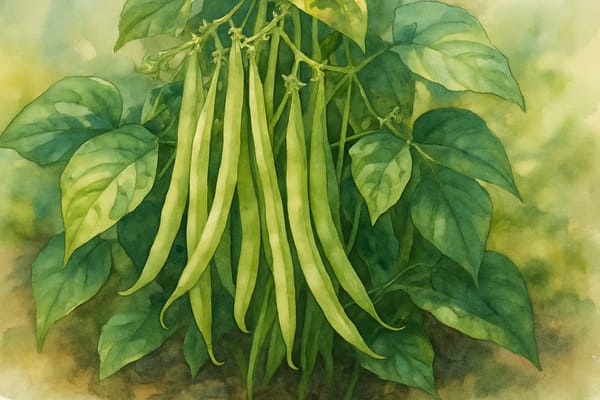There’s something quietly joyful about pulling up a row of homegrown carrots, their leafy tops still damp with morning dew and the soil clinging to their smooth, blunt roots. For Cornish gardeners, few varieties offer the reliability and gentle sweetness of 'Early Nantes'. With its crisp texture, refined flavour, and consistent results, this classic carrot is a favourite in kitchen gardens from coast to countryside.
Unlike some showier vegetables, carrots ask for little more than patience and a patch of well-prepared earth. But for the best roots, there are secrets worth knowing.
Sowing with Intention
In Cornwall’s temperate climate, sowing can begin early. From February, as soon as the ground is workable and above 10°C, the first outdoor sowings can go in. Earlier still, seeds can be started in modules or root trainers under cover in January—but always transplant when the seedlings are small, to prevent root disturbance. Successional sowing every few weeks will keep the harvest flowing through summer.
Carrots are fussy about soil. Deep, loose, and stone-free is best—a sandy or loamy bed that hasn’t seen fresh manure in the past year. Digging over the soil thoroughly and raking to a fine tilth helps roots grow straight and smooth. Sow seeds in drills just 1–1.5cm deep, spacing rows 15–30cm apart. As the seedlings emerge, thin in stages until each has space to swell: around 5–8cm between plants.
Gentle Nurture, Steady Growth
Moisture matters, especially at the start. Carrot seed can be slow to germinate, taking up to three weeks depending on temperature, so keep the top few centimetres of soil evenly moist throughout.
Once seedlings appear, water deeply but infrequently to encourage deep rooting. Avoid watering from overhead, as wet foliage can attract carrot fly and disease. Mulching once plants are established helps retain moisture and suppress weeds.
Thin plants on cool, still evenings and remove thinnings promptly to avoid inviting carrot flies. If these pests are a problem, try fine mesh covers, tall raised beds, or companion planting with onions or marigolds.
Harvesting the Rewards
By June, the first full-sized carrots are often ready. A soft tug isn’t always enough; loosen the soil with a hand fork to prevent snapping. The roots should be smooth, blunt-ended, and vibrantly orange. Their sweet flavour makes them perfect eaten raw in salads, roasted with herbs, or simmered into broths.
If you grow more than you can eat fresh, they store well: remove the foliage and layer the roots in damp sand in a cool, dark place. They’ll keep for weeks, offering the taste of summer long after the harvest.
A Cornish Favourite
Whether you’re gardening on rich inland soil or coaxing crops from a windswept coastal plot, 'Early Nantes' is an ideal choice. It tolerates cool weather and rewards careful sowing with tender, sweet roots that lend themselves to every kind of kitchen use. For beginners and seasoned growers alike, it’s a reliable friend—and a worthy addition to any Cornish garden.
Let the first green fronds be a quiet promise. In a few short months, there will be carrots.











